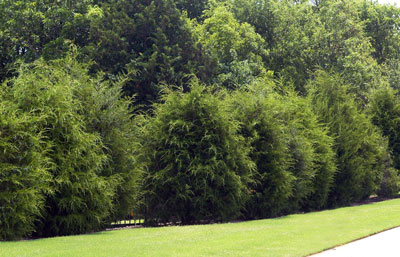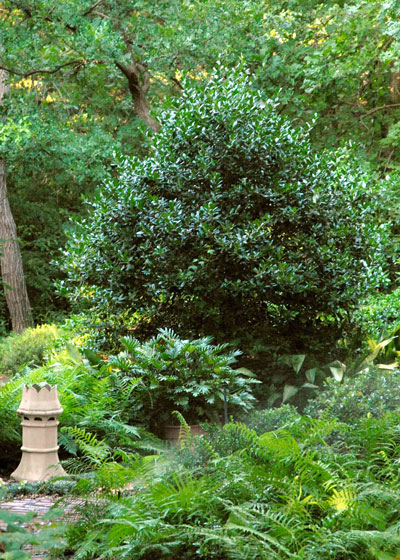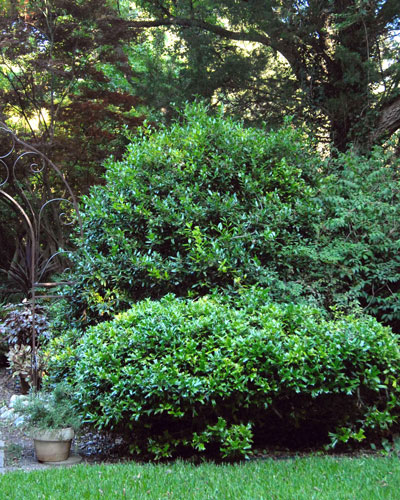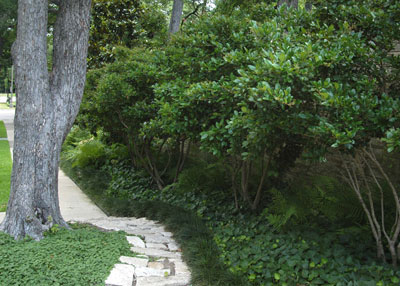Question of the Week: November 24, 2016
Dear Neil: What are the best options for a quick screening plant? We need some privacy for an unsightly view that has cropped up.
I get this question very frequently. I always ask about the surroundings, and of course it also depends on where you are in the state of Texas.
The height of the screen will depend on the angle of view and the space available. Have someone hold a piece of lumber or PVC water pipe vertically. Mark it off in 2-foot increments. Determine visually how far up the screen will need to be, then measure it.

Photo: Row of eastern redcedar junipers provides tall, natural screen.
• Eastern redcedar juniper is my choice for much of the state, but only if you have a good bit of horizontal room, for example on rural acreage. Plant small redcedars (15-18 inches tall), and space them 20 to 24 feet apart. The small transplants can often be dug from nature in the eastern third of the state or bought in 1- or 3-gallon pots elsewhere. They establish and grow much more rapidly than taller plants that are dug out of nature. You’ll get privacy quicker if you zigzag them rather than planting in one single row. It takes more ground space, but from a distance it gives the illusion that they’re twice as close together.

Photo: Nellie R. Stevens holly is one of finest large shrubs for screening views.
• Nellie R. Stevens hollies grow to 15 to 18 feet tall in sun or shade. They’re available from retail nurseries in all sizes, so you can buy larger plants if you’re in need of the privacy faster. Space them 8 or 10 feet apart. This is a handsome large holly that’s adapted to almost any soil as long as it’s not shallow and rocky. It produces masses of large red berries that hold all through the winter.

Photo: Willowleaf (“Needlepoint”) holly gives similar look to Nellie R. Stevens holly, but grows to be only two-thirds as tall.
• Willowleaf holly (also known as Needlepoint holly) grows to 10 or 12 feet tall and 8 or 10 feet wide, also in sun or shade. It, too, produces lovely red fruit on deep green, evergreen shrubs. Space them 7 or 8 feet apart.

Photo: Before hollies became mainstay, waxleaf ligustrum was our most dependable screening shrub. Its popularity is rising again.
• Waxleaf ligustrum was the most popular landscaping shrub in Texas in the 60s and 70s. It fell from favor somewhat following the severe winter of 1983-84, but it’s staged a rebound in recent years. Unlike other ligustrums and privets, waxleaf does not produce viable seeds, so it won’t become invasive. It’s best in sun or mostly sun, and it grows to 8 or 10 feet tall and wide.
All of the plants that I mentioned will grow best if you water them by hand on 3- or 4-day intervals for their first several years. Sprinkler irrigation and drip irrigation will often result in failure. Use an all-nitrogen, lawn-type fertilizer to promote the most vigorous growth.
Note: I cannot in any way recommend golden bamboo (horrifically invasive), Japanese privet (equally invasive) or redtip photinias (prone to the fatal Entomosporium fungal leaf spot).
